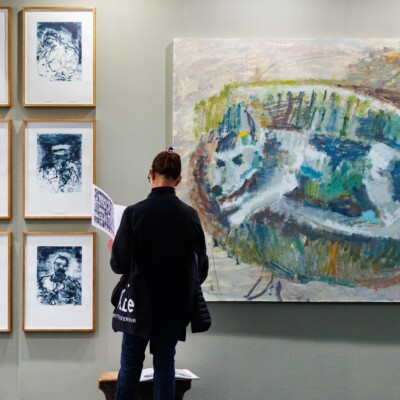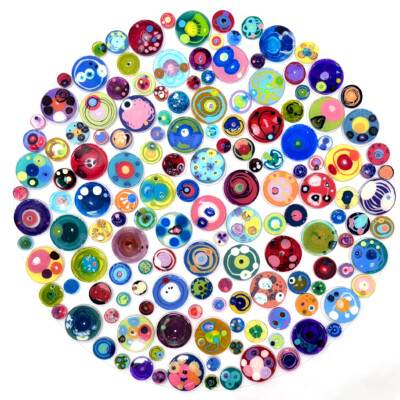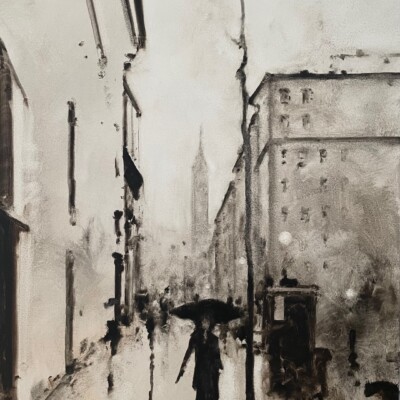Guns & Rain is delighted to present its fifth edition of Fresh Voices. This annual exhibition presents new southern African talent and supports young artists in the earliest stages of their careers – a goal that has been at the core of the gallery’s work right from the start. This year they are excited to present three artists whose work reflects the huge diversity and variance in what it might mean to be young, female and ‘South African’ today. Taken together, this exhibition looks at how these artists frame and re-frame their social inheritances and lived experiences; things are not what they seem. Exhibition is through August 20th, 2022.
Aneesah Girie’s manipulated hijab material considers the representation of gendered Muslim personhood and domesticity. An indictment on South Africa’s relentless rape scourge, Zama Mwandla’s paintings draw on Japanese horror and erotic anime in her depictions of violent revenge fantasies. Meanwhile, Zenaéca Singh explores the history of indentured Indian labour in the sugarfields of KwaZulu-Natal.
Re-presenting the hijab or Muslim veil and transforming worn scarves passed down through her family, Aneesah Girie explores ideas around materiality to address misconceptions about the lived experiences of Muslim women in her community. She recasts soft, feminine, flimsy hijabs into hardened, reflective, glass-like, sculptural forms.

2022
Hijab (scarf) and fabric hardener
59 x 36 cm
There is much more to being Muslim than wearing hijab, this work reiterates, and Girie wants to counter representations that are regressive and reductive. Extending this theme, Girie’s immersive research on gendered spaces such as the kitchen and the dining room leads her to play with cutlery and crockery to reframe ideas around servitude and the sacredness of women’s spaces.
Through painting, sculpture and installation, Zenaéca Singh interrogates the largely state-produced archive on indentured South African Indians (1860 – 1911), particularly regarding the long history and economy of sugar production. Her initial archival research prompted oil paintings that comment on labour, landscape and belonging. Next, creating alluring ships with solid crystallized sugar, Singh recalls the vessels that transported Indians to colonial Natal, at the same time nodding to sugar’s embeddedness in earlier histories of slavery. With the continual prospect of the sugar melting, Singh comments on indeterminate outcomes, and the fluidity of transnational identities and cultures. Presented in a recreated domestic setting, her sculptures also reflect on how domestic and familial life interface with extractive global colonial economies, through a common household consumable.

Zama Mwandla is absolutely unapologetic about her focus: the murderous revenge fantasies of rape victims in search of “heinous means to heal from a traumatic past”. Her paintings introduce a panoply of human-animal hybrids which reappear in the series, each character carrying particular signification. These surreal creatures manifest in playful, seductive, rich colours – a means to entrap a male audience into confronting her graphic and gruesome subject matter. In her bold re-tellings of violence, rumination, psychopathic imagination, rage and grievance, she makes her characters relatable. Mwandla suggests, however, that attempts at revenge are ultimately futile; they are relegated to the world of fantasy and scenes on repeat.

For more information on the gallery visit www.gunsandrain.com




